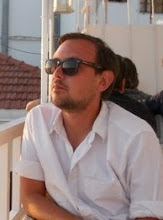
The pageant that burgeoning playwright Margot Tenenbaum (Gwyneth Paltrow) puts on at one of her childhood birthday parties crams the gently decrepit home in which her family lives with passionate admirers. The stage overflows with the stripes of zebras and tigers; the fronds of painstakingly made faux palms seem to emerge, fully formed, from the walls. But her father (Gene Hackman) dampens the enthusiastic ovation she receives. He didn't, he tells her, find it believable.
Such is the world of Wes Anderson, teeming with the flotsam and jetsam of lives lived parallel to our own: a boar's head on the wall, a junky Gypsy Cab, a falcon on the roof; prep school uniforms, an aquarium ground breaking, a childish love expressed through red, felt-tipped pens; Pescespada Island, Vietcong man-o-wars, the crumbling Belafonte. He fills his films, as Margot fills her pageant, with fakery of place and time that teeters on the edge of the real — "American Gothic," you might call it, with the same stoic humor and grim honesty of the famous painting. His world is one tipped slightly askew, listing with soft tides of graceless human interaction. It's a world that easily obscures the vitality leaping across the screen, a world that easily obscures the fact that Anderson's films tell stories about, quite simply, family.
The Royal Tenenbaums is about a family whose members are so stunted by their early successes that, when failure comes, it rumbles like an oncoming train. Over a theme hopping with the faintly sinister beat of a cello played pizzicato, we see a self-described "family of geniuses" writing plays, selling stocks and bonds, winning tennis tournaments — all in the nostalgic glow that infuses families falling quietly into ruin. "What did we do?" they seem to ask from their still faces and deep-set eyes. "Where did we lose ourselves along the way?"
The answer, despite the fantasy world of cozy urbanity it implies, is in their sprawling house - one that's fallen into the kind of neglect houses that have lost their raison d'etre often do. This is where board games were played and juvenile paintings hung, where tents were pitched and the trinkets of a once-blissful family life have been filed carelessly away. Home, it is said, is where the heart is, but home is in fact a collection of objects, a stable place where memory is hidden in dusty corners and the walls seep with old arguments and bliss. The film doesn't really begin until the grown Tenenbaum children return home, because that is where their collection of collective objects rests.
It is The Life Aquatic with Steve Zissou, however, that strikes me most forcefully as a story of family, possibly because the story of family flows as an undercurrent through what is, essentially, the story of a journey. Here the dysfunction is (in some ways) more subtle — instead of asking, "What did we do?" it asks, "How does a man without a family find one?"
Steve Zissou (Bill Murray), a sort of modern-day Cousteau, is the scientist and explorer at the head of a documentary film crew on the search for the shark that ate Steve's closest friend and co-captain, Esteban. He neglects his wealthy wife; he's abandoned a son conceived in a moment of philandering; his film career has tanked on the poor reception of his most recent film. Murray, with a growing paunch of tan, flabby skin and a face fighting a losing battle with gravity, gives Steve a deadened egocentrism. At first glance, he seems a self-absorbed jerk, and he certainly is that. But there's something else there — some aging, some slowing and slipping-down that sends him reeling. He's abrasive, cocky, maybe even stupid. But he's inconsolably sad, too.
After a long series of diversions — too long, in fact — he catches up with the elusive jaguar shark and descends with his companions into the great black deep of the sea in a submarine called Deep Search. Music bubbles up, tapping affirmatively to the rhythms of his final quest, as animated sea life scuttles by. Out of the dark water comes the massive shark, its scales glimmering in the light of the sub, shaking Steve's vessel, and Steve himself, to the core. "It is beautiful, Steve," his wife tells him. "Yeah," he replies. "I wish Esteban were here to see it."
As his aloof, confident façade melts away, his friends reaching in unison to place a hand on his shoulder, something of family is reaffirmed. Some love coils up and springs forth, some recognition that family — whether composed of blood relatives or just the people one feels kinship with — is consolation, bitterness and fear rolled into a group of people tied by an unseen cord. There is, in the stillness of the moment, an unspeakable beauty: an understanding that certain mishaps in life are not meant to be understood so much as endured. Steve's home is a collection of creatures, of companions, emerging out of the dark. And you can tell, watching his eyes for that simple reanimation by which we move through grief, that his heart's finally in it, too.

No comments:
Post a Comment